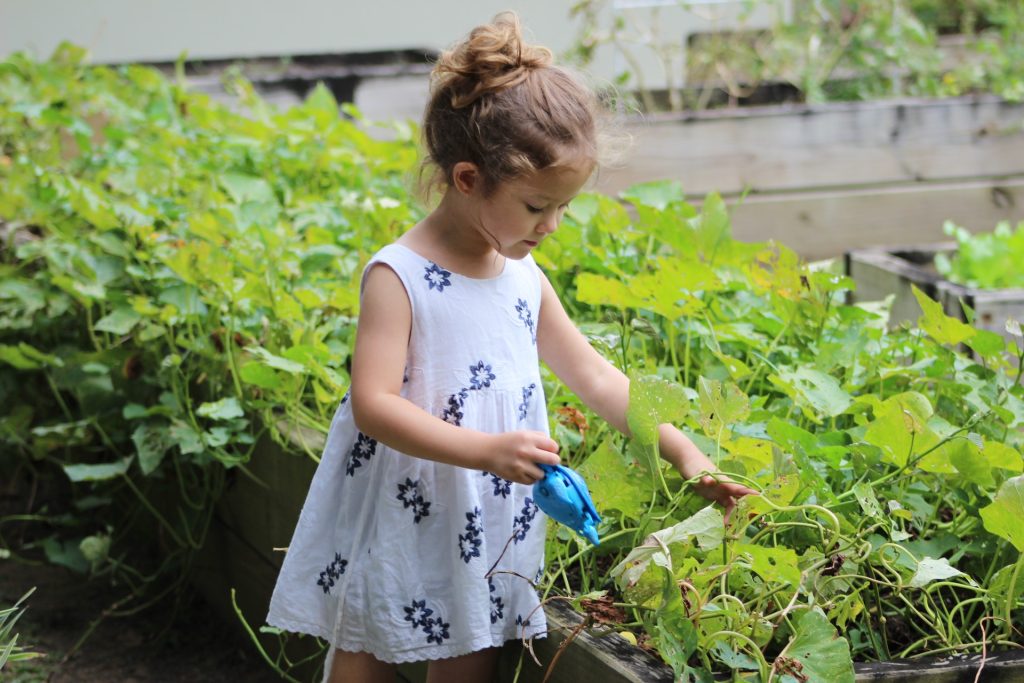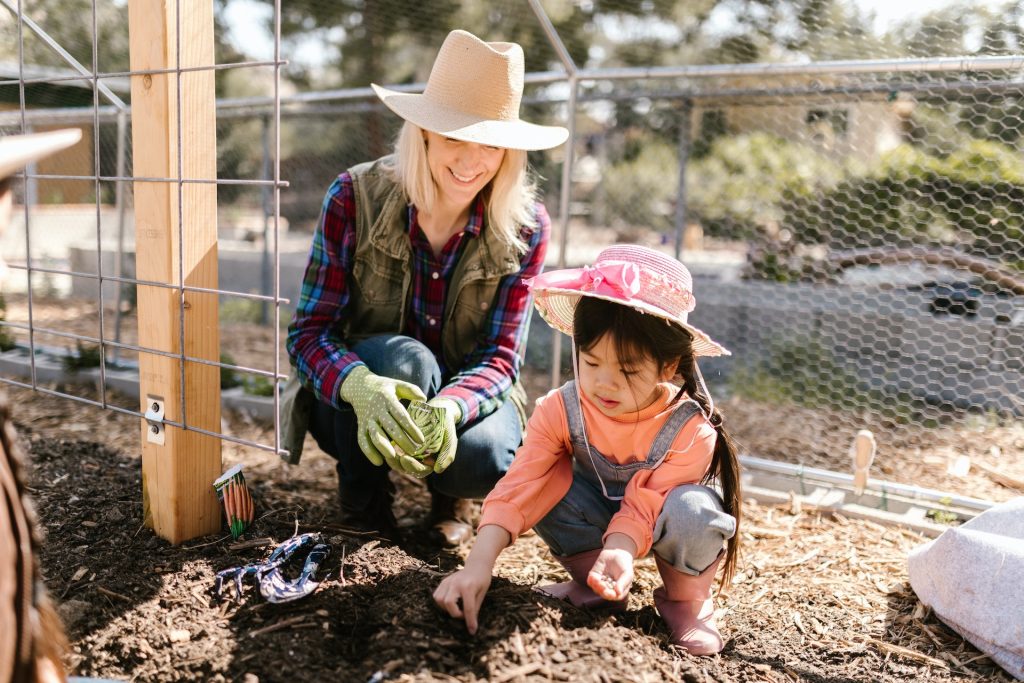Discover how to introduce gardening to 2-3 year old children with this comprehensive step-by-step guide.
Teaching Gardening to 2-3 Year Old Children: A Step-by-Step Guide
Teaching gardening to 2-3 year old children can be a fun and rewarding experience for both toddlers and parents alike. Gardening not only allows young minds to explore the wonders of nature but also helps develop essential skills such as patience, responsibility, and a love for the environment. In this step-by-step guide, we will delve into the various aspects of teaching gardening to toddlers, from understanding its importance to engaging activities that will captivate their imagination.
Understanding the Importance of Gardening for Toddlers

Before we dive into the practical aspects, let’s take a moment to appreciate the incredible benefits gardening offers to young minds.
Gardening provides an excellent platform for toddlers to learn about the natural world around them. It stimulates their senses and encourages them to explore new textures, scents, and colors. Imagine the joy on their faces as they touch the soft petals of a flower, smell the sweet fragrance of herbs, or marvel at the vibrant hues of different vegetables. These sensory experiences not only captivate their attention but also help them develop a deeper connection with nature.
Moreover, gardening has been found to enhance children’s cognitive, physical, and emotional development. As toddlers engage in gardening activities, they are exposed to various learning opportunities. They learn about the life cycle of plants, the importance of water and sunlight, and the role of insects in pollination. This hands-on experience promotes problem-solving skills as they figure out how to plant seeds, water plants, and protect them from pests. It also fosters a sense of responsibility as they care for their plants and observe them grow.
In addition to cognitive development, gardening also has a positive impact on toddlers’ physical well-being. Digging, planting, and watering plants involve physical movements that help develop their fine and gross motor skills. These activities improve hand-eye coordination, balance, and strength. Furthermore, spending time outdoors exposes them to fresh air and sunlight, contributing to their overall health and well-being.
Emotionally, gardening provides a therapeutic and calming effect on toddlers. The act of nurturing plants and witnessing their growth instills a sense of pride and accomplishment. They feel a deep connection with nature and develop empathy as they understand the needs of living organisms. Gardening also serves as a stress-reliever, allowing toddlers to unwind and find solace in the beauty of nature.
Additionally, gardening encourages healthy eating habits in toddlers. When they grow their own fruits, vegetables, and herbs, they are more likely to try and enjoy them. This hands-on experience with fresh produce promotes a positive attitude towards healthy eating and helps them develop a taste for nutritious foods.
Now that we understand the incredible benefits of gardening for toddlers, let’s discuss some safety measures to ensure their well-being while enjoying this enriching activity.
Safety Measures for Toddler Gardening
While gardening with toddlers is an enjoyable experience, it’s essential to prioritize their safety. Here are a few safety measures to keep in mind:
- Choose child-sized gardening tools that are safe and easy for toddlers to handle. Look for tools with rounded edges and sturdy handles. This way, they can actively participate in gardening without the risk of injury.
- Select non-toxic plants and seeds to ensure that accidental ingestion poses no harm. Toddlers have a tendency to explore the world through their mouths, so it’s crucial to choose plants that are safe if ingested.
- Set up a safe gardening space by removing any sharp objects, securing loose soil, and creating boundaries to prevent wandering. Clear the area of any potential hazards and create a designated space where toddlers can freely explore and engage in gardening activities.
- Supervise toddlers at all times during gardening activities. While it’s important to encourage independence, toddlers still need constant supervision to ensure their safety and well-being.
Preparing for Your First Gardening Session
Now that we understand the significance of gardening for toddlers, let’s prepare for our first gardening adventure together!
Gardening with toddlers is not only a fun and educational activity, but it also helps them develop important skills such as fine motor skills, sensory exploration, and an appreciation for nature. By involving your little ones in gardening, you are fostering a love for the environment and teaching them the value of patience and nurturing.
Choosing the Right Tools
When it comes to selecting tools for your little green thumbs, opt for lightweight, child-sized versions. Look for shovels, rakes, and watering cans specifically designed for little hands. These pint-sized tools will make gardening more enjoyable and ensure your little ones have a better grip.
Additionally, you can consider getting gardening gloves for your toddlers. Not only will this protect their hands from dirt and thorns, but it will also make them feel like real gardeners!
Selecting Appropriate Plants and Seeds
Choosing the right plants and seeds is crucial to keeping toddlers engaged in gardening. Opt for plants that have visible growth, such as sunflowers or cherry tomatoes. This way, your little ones can witness the magic of nature as they watch their plants grow and bloom.
Furthermore, involving your toddlers in the selection process can be a great learning opportunity. Take them to a local nursery or garden center and let them choose a few plants or seeds that catch their attention. This will not only make them feel involved but also instill a sense of responsibility as they take care of their chosen plants.
Setting Up a Safe Gardening Space
Creating a safe environment is essential when gardening with toddlers. Clear the area of any hazardous objects and ensure the soil is well-prepared for planting. You can designate a specific area using colorful tape or fence off a part of your backyard.
Consider creating a dedicated gardening space for your little ones by using raised beds or containers. This will not only make it easier for them to reach the plants but also prevent them from accidentally stepping on or damaging other areas of your garden.
It’s also important to teach your toddlers about garden safety. Show them how to properly handle tools, avoid touching poisonous plants, and remind them to wash their hands after gardening to prevent the spread of germs.
Remember, gardening with toddlers is all about exploration and having fun. Embrace the messiness, encourage their curiosity, and enjoy the quality time spent together in nature’s classroom.
Introducing Toddlers to Gardening

Now comes the exciting part—introducing your little ones to the wonders of gardening!
Gardening with toddlers is not only a great way to spend quality time together, but it also helps them develop a love for nature and a sense of responsibility. As you embark on this journey, here are some tips to make the experience even more enjoyable and enriching.
Making Gardening Fun and Engaging
Gardening shouldn’t feel like a chore for toddlers. Make it a fun-filled adventure by incorporating activities that capture their imagination and creativity. Consider organizing scavenger hunts where they can search for different types of leaves, flowers, or insects. This not only keeps them engaged but also helps them learn about the diversity of plants and insects in their garden.
Another exciting activity is leaf rubbings. Let your little ones collect leaves of various shapes and sizes, place them under a piece of paper, and rub a crayon over the paper to reveal the intricate details of the leaves. This activity not only enhances their fine motor skills but also sparks their curiosity about the unique characteristics of different plants.
Additionally, creating personalized plant markers can be a wonderful way to make gardening more personal and enjoyable for toddlers. Let them decorate wooden or plastic markers with their favorite colors and drawings. This not only helps them identify the plants they are growing but also instills a sense of ownership and pride in their gardening efforts.
Teaching Basic Gardening Concepts
Simplicity is key when explaining gardening concepts to toddlers. Start by teaching them the basics, such as the importance of sunlight, water, and healthy soil. Take them on a journey of discovery by showing them how plants need sunlight to make food through photosynthesis, water to grow and stay hydrated, and healthy soil to provide them with essential nutrients.
Encourage your little ones to explore nature and let their inquisitive minds flourish. Show them how to gently touch the soil and feel its texture, allowing them to connect with the earth and understand its role in nurturing plants. Let them observe how plants grow and change over time, from tiny seeds to beautiful flowers or delicious fruits and vegetables.
By teaching these basic gardening concepts, you are not only helping them develop a green thumb but also fostering their understanding of the natural world and the importance of taking care of the environment.
Encouraging Exploration and Curiosity
Allow your little gardeners to explore their surroundings and observe the intricate details of plants and insects. Encourage them to ask questions and provide simple explanations. For example, if they notice a ladybug on a leaf, explain that ladybugs are beneficial insects that eat harmful pests, helping to keep the garden healthy.
As they explore, encourage them to use their senses. Let them smell the fragrant flowers, feel the different textures of leaves, and listen to the sounds of buzzing bees or chirping birds. This sensory experience not only stimulates their curiosity but also helps them develop a deeper connection with nature.
Remember to be patient and supportive as they explore and ask questions. By nurturing their curiosity, you are fostering their love for learning and encouraging them to become lifelong learners.
As you embark on this gardening journey with your toddlers, remember that the process is just as important as the end result. Enjoy the moments of discovery, laughter, and growth together. Happy gardening!
Step-by-Step Gardening Activities for Toddlers
Let’s embark on an exciting journey of step-by-step gardening activities tailor-made for your little green thumbs!
Planting Seeds
Start by showing your toddlers how to plant seeds in pots or a designated garden bed. Let them feel the soil, drop in the seeds, and gently cover them with soil. Water them together, explaining the importance of water for plant growth.
Watering Plants
Show your little gardeners how to water plants but don’t forget to emphasize the importance of not overwatering. Teach them how to use a watering can and explain that plants need the perfect amount of water, just like we do.
Observing Growth and Changes
Maintaining enthusiasm and curiosity is vital throughout the gardening journey. Encourage your toddlers to observe the plants daily, looking for subtle changes in size, color, and texture. This will foster their sense of wonder and connection to the natural world.
Gardening with 2-3 year old children is a delightful way to nurture their love for nature and instill important life skills. By following this step-by-step guide, you can create a memorable and educational gardening experience that will leave lasting impressions on their young minds. So grab your gardening tools, get your hands dirty, and watch as your toddlers blossom into budding little green thumbs!



